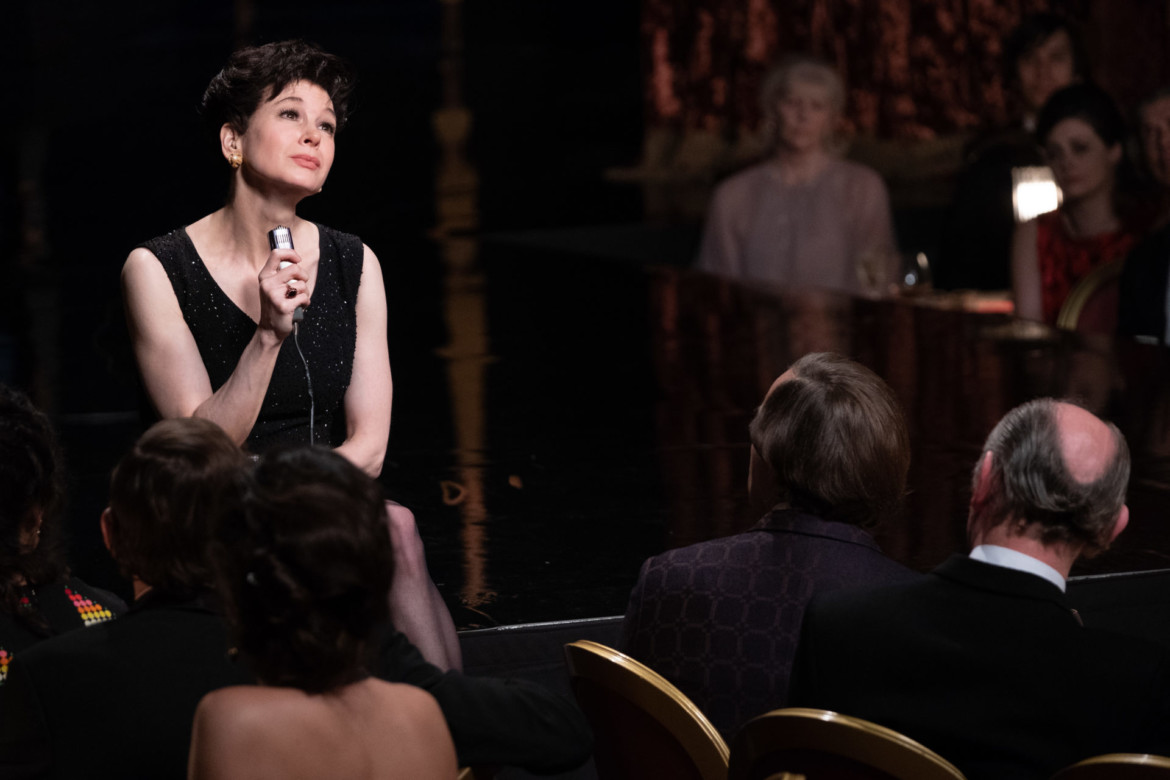Renée Zellweger’s detailed performance makes a compelling case for an Oscar
By Kirsten Coachman
Renée Zellweger steps back into the spotlight as “ the world’s greatest entertainer,” Judy Garland, in “Judy,” directed by Rupert Goold. The movie, out this weekend, was written by Tom Edge, based on Peter Quilter’s play, “End of the Rainbow.”
Taking the audience back to the yellow brick road, where a teenage Judy Garland is already struggling with her life being overrun by MGM, leaving the young actress exhausted, “Judy” narrows its scope to the end of her life. Thirty years after her breakout role as Dorothy in “The Wizard of Oz,” she struggles to provide basic needs to her children Lorna and Joey. Garland reluctantly agrees to a five-week engagement in London at The Talk of the Town with the goal of reuniting with her kids (who are currently staying with their father Sid Luft) after she returns to the States.
Sleep-deprived and worried her voice will fail her on opening night, Garland has to be literally pushed on stage by Rosalyn Wilder (Jessie Buckley), who’s in charge of keeping an eye on her during The Talk of the Town stint. Whatever doubts Garland had about herself and her voice that evening were unfounded as she launches into “By Myself,” thrilling her captive audience. Giving herself fully to the performance leaves Garland exhausted and worried about whether or not she can carry on for the remaining dates.
Garland truly wants nothing more than to go home and be with her children, whom she misses dearly, yet she can’t help but be intoxicated by the lure of the stage and a live audience, even when things in London don’t go as planned.
The movie felt slightly longer than its 118-minute runtime, but to Zellweger’s credit, her performance is what keeps you drawn in. She plays Garland with so much emotional conviction and panache, as well as utilizing her body language to convey the exhaustion Garland feels after a performance in a believable, nuanced manner.
The work that Zellweger put into this role is in the details; capturing Garland’s speaking voice, her mannerisms, and how she moved onstage—including how she touches her hair while performing—was remarkable.
The hair, makeup, and costume teams also deserve praise, as they really put the finishing touches on Zellweger’s transformation of Garland in nailing her aesthetic during that era, from how her black eyeliner was applied to the type suits and scarves she wore. The degree of accuracy in getting the overall look down is impressive.
While, admittedly, Zellweger’s singing voice isn’t as distinctive as Garland’s, the songs she performs in the film manage to evoke a sense of nostalgia. While singing in a movie when you don’t think of yourself as a singer is a risky move, it’s one that could potentially pay off in the form of a gold statue named Oscar. Zellweger turned in a commanding, career-best performance playing Garland, and it would be shocking not to hear her name come up as awards season rapidly approaches.
“Judy” is now playing in theaters.
